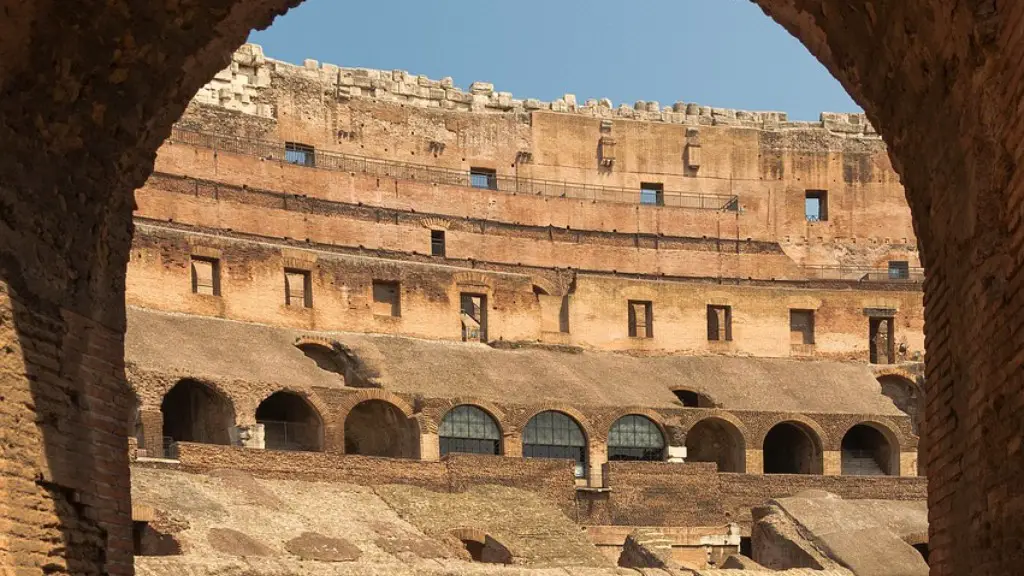There is no shortage of evidence to suggest that the Romans were a people who loved violence and bloodshed. One need only look at their entertainment to see this. Gladiatorial contests, where men fought to the death for the amusement of the crowd, were a popular form of entertainment in Rome. These contests were often used as a way to tell stories about Roman history and culture. The gladiators, then, were not just entertainment but also storytellers. In a sense, they were the ancient Roman equivalent of Hollywood celebrities.
The gladiators told us that Rome was a land of great opportunity. If you were brave and skilled enough, you could make a great life for yourself in the arena. The crowds were always eager to see more bloodshed, and the prize money was good. But it was a dangerous life, and one misstep could cost you your life.
How were gladiators viewed in ancient Rome?
Being a gladiator wasn’t all a bed of roses. They were rigorously segregated from polite society and were incarcerated when not training or fighting. They retained an aura of dishonour about them even in death – when they were interred far from their contemporaries in special graveyards of their own.
Roman gladiator games were a way for the ruling class to show off their wealth and power to the people. They were also used to commemorate military victories, mark important visits from officials, and celebrate special occasions. However, these games also served as a way to distract the people from the problems facing the empire.
What values in Rome did gladiators represent
The gladiatorial games were very popular with all classes and were thought to promote Roman values of discipline, courage and endurance through blood and suffering. Gladiatorial contests were borrowed from the Etruscans. The games were usually held in purpose-built arenas, the most famous of which was the Colosseum in Rome.
The purpose of gladiator games originated with the Etruscans. A leader was, as part of the funeral ceremony, a pair of warriors fighting to the death to honor his warlike spirit. Over time, the practice became institutionalized, which Romans imitated.
Were gladiators respected in Rome?
Gladiators were a common sight in Roman society and were often respected for their skills in combat. Although they were not considered to be as highly skilled as professional soldiers, they were still respected members of society. Most gladiators were slaves or prisoners who were bought by a manager and then sent to special gladiator schools to be trained in the art of combat. Today, we can still see this type of training in athletes who compete in various sports.
The concept of the gladiator battle as a sacrificial event to please the gods was later adopted by the Romans. In fact, the first recorded gladiator battle in Rome took place in 264 BC as part of celebrations honoring the dead. In order to ensure that the games were fair, the Roman Senate decreed that each gladiator must take an oath before fighting. The oath that the gladiators swore was “I will endure to be burned, to be bound, to be beaten, and to be killed by the sword.”
How did gladiators impact history?
Gladiatorial shows were a popular form of entertainment in the Roman Empire. They were a way to turn war into a game and preserve an atmosphere of violence in time of peace. They also functioned as a political theatre which allowed confrontation between rulers and ruled.
The Romans believed in physical bravery as a cardinal virtue and simultaneously believed that persons of no status, particularly persons who had done something wrong, deserved physical punishment. The Roman arena was used to punish miscreants. Criminals were exposed to the beasts.
Why did the Romans love gladiators
The question of why the lives of strangers didn’t matter to Romans is a complicated one. There are a number of possible reasons, including the fact that most of the warriors were either prisoners or criminals, and thus were not considered fully human. Additionally, historians believe that Roman blood sports may have encouraged a sense of camaraderie among the people, making them less likely to empathize with outsiders.
1. Gladiators didn’t just fight to the death; in fact, most fights were stopped before either fighter was seriously injured.
2.Fighting against animals was rare; most fights involved two human gladiators.
3. Not all gladiators were slaves; some were volunteers or even professional fighters.
4. There were female gladiators, though they were not as common as their male counterparts.
5. Gladiatorial fights started out as a funeral ritual in which family members or friends of the deceased would fight each other.
6. There were different types of gladiators, each with their own specialty weapons and fighting style.
7. Roman emperors sometimes fought as gladiators; famously, the emperor Commodus took part in several matches.
8. Gladiators were the celebs of their day; they were often treated like royalty and had adoring fans.
9. Their popularity led to the construction of huge arenas like the Colosseum, where thousands of people could watch them fight.
What were positives of being a gladiator?
From what we know, free gladiators generally had much better living conditions and were given more freedom than slaves. They were usually only expected to fight around 5 times a year, which left them with a lot of free time to enjoy their earnings.
While contests between two men were common in ancient times, they typically did not fight to the death. Instead, the contests were usually single combat between two men of similar size and experience. Referees oversaw the action, and likely stopped the fight as soon as one of the participants was seriously wounded. This helped to prevent unnecessary deaths and maintain the integrity of the contest.
What did gladiators get if they win
Gladiator fights were a popular form of entertainment in the Roman Empire. A gladiator who won several fights, or served an indefinate period of time was allowed to retire, in many cases to continue as a gladiator trainer. Those who did win or buy their freedom, or at times at the request of the crowd or Emperor, were given a wooden sword (rudis) as a memento.
The gladiatorial games were officially banned by Constantine in 325 CE. Constantine, considered the first “Christian” emperor, banned the games on the vague grounds that they had no place “in a time of civil and domestic peace” (Cod Theod. 16.10.2). Some have argued that this was simply a political move on Constantine’s part, as the games were extremely popular and he didn’t want to anger the people. Others believe that Constantine genuinely found the games barbaric and wanted to put an end to them. Regardless of Constantine’s motives, the ban on gladiatorial games marked the end of an era in Roman history.
Why were slaves who became gladiators required to fight?
The first gladiators were believed to be slaves who were made to fight to the death at the funeral of a distinguished aristocrat, Junius Brutus Pera, in 264 BC. This spectacle was arranged by the heirs of the deceased to honour his memory.
The ancient Roman practice of staging battles between gladiators was an incredibly brutal and often deadly affair. Many of the participants were forced into the arena against their will, and many more faced their opponents with fear and trepidation. On one occasion, 20 gladiators committed group suicide rather than face the arena. This attest to the horrific nature of the “sport” and the fear that it inspired in those who were forced to take part.
Final Words
The gladiators told stories about the great city of Rome. They spoke of the magnificent buildings and the wonderful food. They also spoke of the political situation in Rome.
From the accounts of the few remaining gladiators, it is clear that ancient Rome was a brutal and violent place. There was very little honor in being a gladiator, and most of them were forced into the profession against their will. The few who did survive their careers were often left with physical and mental scars that would never heal. In conclusion, the gladiators’ stories provide a grim glimpse into the dark reality of life in ancient Rome.





